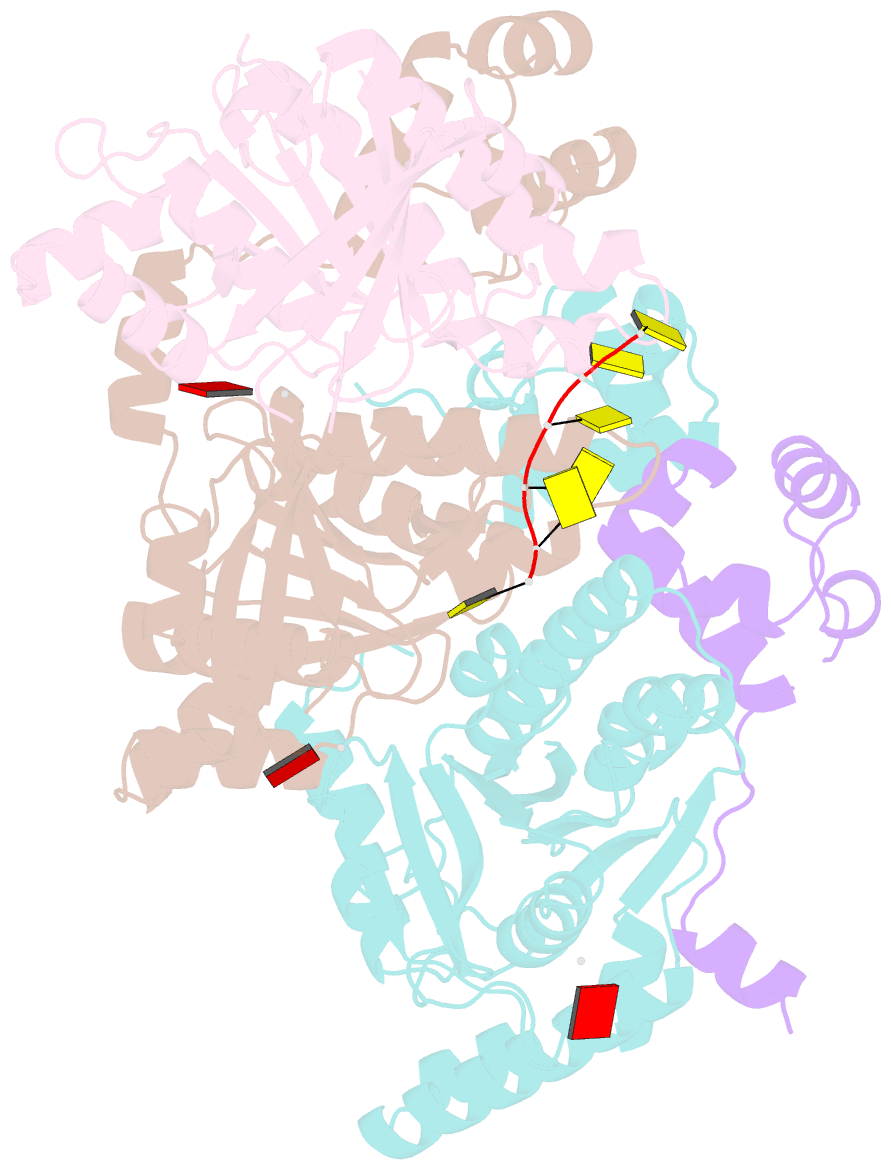Summary information and primary citation
- PDB-id
- 8gbj; SNAP-derived features in text and JSON formats;
DNAproDB
- Class
- recombination
- Method
- cryo-EM (3.11 Å)
- Summary
- cryo-EM structure of a human bcdx2-ssDNA complex
- Reference
- Rawal Y, Jia L, Meir A, Zhou S, Kaur H, Ruben EA, Kwon Y, Bernstein KA, Jasin M, Taylor AB, Burma S, Hromas R, Mazin AV, Zhao W, Zhou D, Wasmuth EV, Greene EC, Sung P, Olsen SK (2023): "Structural insights into BCDX2 complex function in homologous recombination." Nature, 619, 640-649. doi: 10.1038/s41586-023-06219-w.
- Abstract
- Homologous recombination (HR) fulfils a pivotal role in the repair of DNA double-strand breaks and collapsed replication forks1. HR depends on the products of several paralogues of RAD51, including the tetrameric complex of RAD51B, RAD51C, RAD51D and XRCC2 (BCDX2)2. BCDX2 functions as a mediator of nucleoprotein filament assembly by RAD51 and single-stranded DNA (ssDNA) during HR, but its mechanism remains undefined. Here we report cryogenic electron microscopy reconstructions of human BCDX2 in apo and ssDNA-bound states. The structures reveal how the amino-terminal domains of RAD51B, RAD51C and RAD51D participate in inter-subunit interactions that underpin complex formation and ssDNA-binding specificity. Single-molecule DNA curtain analysis yields insights into how BCDX2 enhances RAD51-ssDNA nucleoprotein filament assembly. Moreover, our cryogenic electron microscopy and functional analyses explain how RAD51C alterations found in patients with cancer3-6 inactivate DNA binding and the HR mediator activity of BCDX2. Our findings shed light on the role of BCDX2 in HR and provide a foundation for understanding how pathogenic alterations in BCDX2 impact genome repair.





